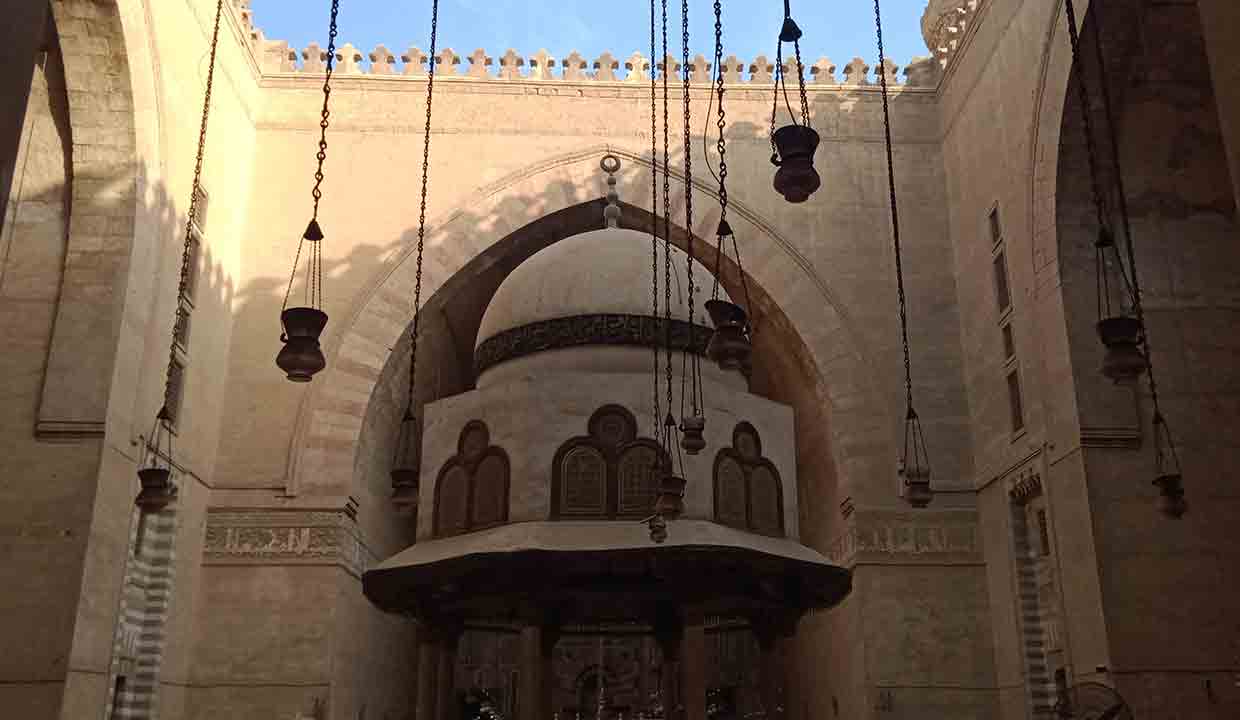Dive into Cairo’s heart with the Sultan Hassan Mosque, a Mamluk era gem, where history and spirituality entwine in architectural splendor.
The bustling city of Cairo is renowned for its myriad architectural wonders that span various eras of human history. Among these gems, one stands out not just for its size, but for its historical significance and architectural mastery: the Mosque-Madrasa of Sultan Hasan. Nestled in Salah al-Din Square, in the heart of Cairo’s historic district, this monumental structure is a testament to the glory of the Mamluk era in Egypt.
Historical Background:
Before delving into the architectural intricacies of the mosque, it is essential to appreciate its historical backdrop. Commissioned by Sultan Hasan ibn Muhammad ibn Qalawun in 1356 CE and completed in 1363 CE, the mosque was intended to be a centerpiece of Mamluk religious and educational life. However, the mosque’s construction wasn’t devoid of controversies. Sultan Hasan faced challenges and political turmoil during his rule, and the mosque’s construction was punctuated with stories of its architects being executed to preserve its architectural secrets.
Architectural Grandeur:
- Facade and Entrance: As you approach the mosque, you are first greeted by its imposing facade, stretching upwards of 36 meters. The entrance, guarded by massive bronze doors, provides a majestic portal into this grand edifice. The intricate stalactite detailing above the entrance is a testament to the high level of craftsmanship of the period.
- The Courtyard: Once inside, the vast open courtyard unveils itself, surrounded by four towering iwans (vaulted halls open on one side), each dedicated to one of the four main Sunni schools of thought – Hanafi, Maliki, Shafi’i, and Hanbali.
- The Minarets: Uniquely, Sultan Hassan Mosque features two distinct minarets at opposite corners, instead of the usual symmetrical placement in many other mosques. Their towering presence can be seen from various points in the city, serving as both spiritual and architectural landmarks.
- Interior Spaces: The mosque is not just a place of worship but was also designed as a madrasa, or religious school. The chambers around the courtyard served as classrooms, each dedicated to a specific discipline, from Hadith studies to astronomy. The mihrab (prayer niche indicating the direction of Mecca) in the qibla iwan is particularly ornate, featuring exquisite marble mosaics and detailed woodwork.
- Acoustics: An oft-mentioned marvel of this mosque is its acoustic design. It’s said that a whisper from the mihrab can be heard across the vast courtyard, a feature intentionally designed to ensure the Imam’s voice would reach every corner during sermons or prayers.
Cultural and Religious Significance:
Beyond its architectural marvel, the Mosque-Madrasa of Sultan Hasan has played a pivotal role in the religious and educational landscape of Cairo. For centuries, it served as a focal point for scholars, theologians, and students from across the Islamic world, cementing Cairo’s reputation as a center of learning and religious discourse.
Furthermore, the mosque has witnessed countless historical events and has remained a constant, enduring symbol as Cairo evolved around it. From the Mamluk era to the modern-day, it has seen empires rise and fall, and yet it stands, a silent sentinel to the passage of time.
In Conclusion:
The Mosque-Madrasa of Sultan Hasan is more than just a building; it’s a tapestry of history, culture, and architectural genius interwoven into the fabric of Cairo. A visit to this monument is not just a journey through its hallways and chambers but a voyage through time, offering a glimpse into the grandeur of the Mamluk era and the timeless appeal of Islamic architecture.
